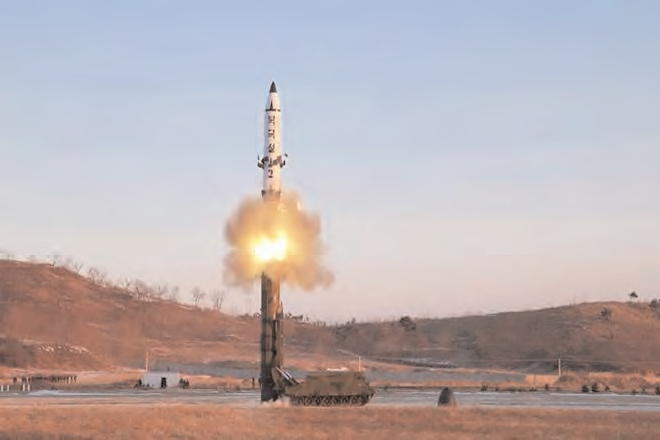
BEIJING (TIP): The successful test of a US missile interceptor has sparked concerns in China as experts said it will break the strategic balance with other nuclear powers and signals preparations for military action against nuclear-armed North Korea The US has successfully tested a mock intercontinental ballistic missile (ICBM) using its own upgraded long-range interceptor warhead.
“This test is similar to actual combat because it used X-band radar to track and lock on to the target – an ICBM – by itself. In the past, the US used a medium-range missile and the defence system had the data and information about the target before the test,” Yang Chengjun, a senior military strategist on missile studies from the PLA Rocket Force, told the Global Times.
Officials said the US interceptor missile travelled at 27,040km per hour and hit its target over the Pacific Ocean. The test came a day after North Korea tested its ninth ballistic missile this year, which travelled 450 kms before splashing down in the Sea of Japan. Pentagon spokesperson Navy Captain Jeff Davis said the test had been planned for some time and was not timed specifically as a response to North Korea. “In a broad sense, North Korea is one of the reasons why we have this capability,” he said in a statement.
Yang said the US test indicates it is preparing for military action as tensions in Northeast Asia increased. However, North Korea’s test only proves that it has mediumrange missiles, not ICBMs, so the US’ missile defence system is targeting nuclear powers like China and Russia, which could launch ICBMs to strike US territory, Yang said.
The US interceptor has an uneven track record, having succeeded nine times out of 17 attempts against missiles in tests since 1999, although the most recent test in June 2014 was a success, state-run Xinhua news agency reported.
The US has 26 interceptors based at Fort Greely in Alaska and four at Vandenberg Air Force Base. Last week, the Pentagon presented its 2018 budget to Congress, proposing spending $7.9 billion on missile defence, including $1.5 billion for the ground-based mid- course defence programme.
“The balance between nuclear armed countries is based on ‘Mutual Assured Destruction’ (MAD), and the development of missile defence systems is for the US to seek absolute security. But it’s actually damaging the balance and it will surely bring about an arms race among nuclear armed countries,” Chu Yin, an associate professor at the University of International Relations said. “China also has its missile defence system, with technology very similar to the US’, but the system is not as comprehensive as the US system,” Yang noted.
China has already exercised about the US deployment of THAAD (Terminal High Altitude Area Defence) interceptor missiles in South Korea to ward off to counter missile threats from North Korea as its radars provide a deep look into Chinese territory, specially its missile activities. (PTI)





Be the first to comment